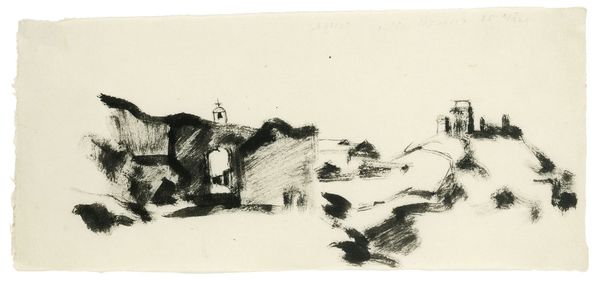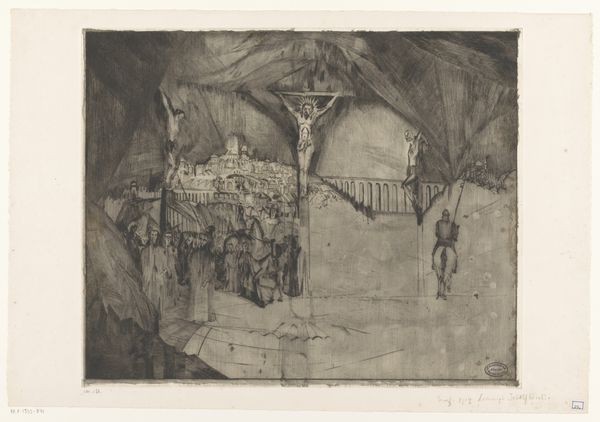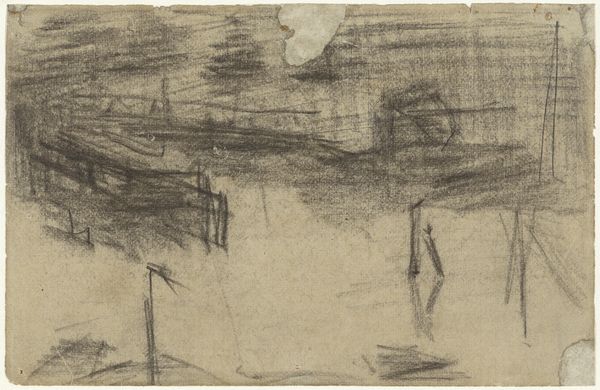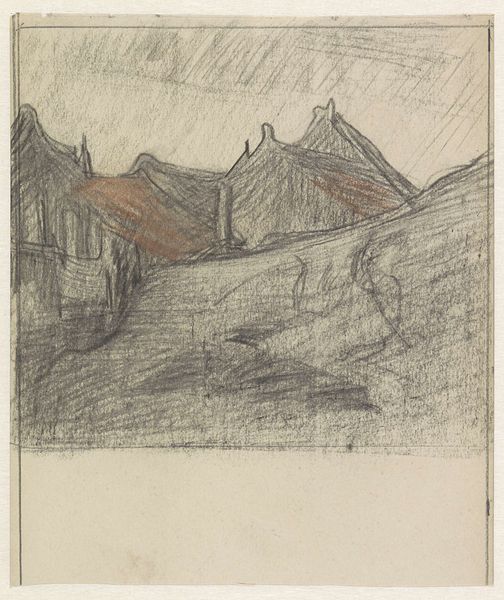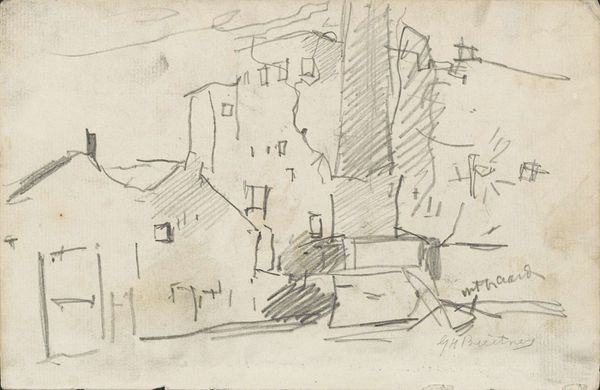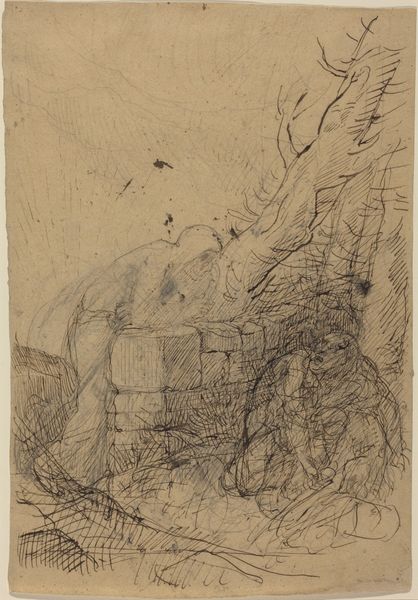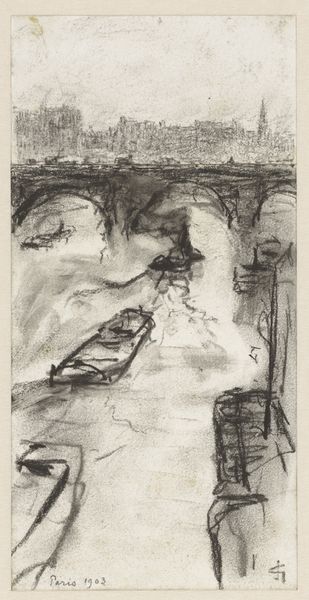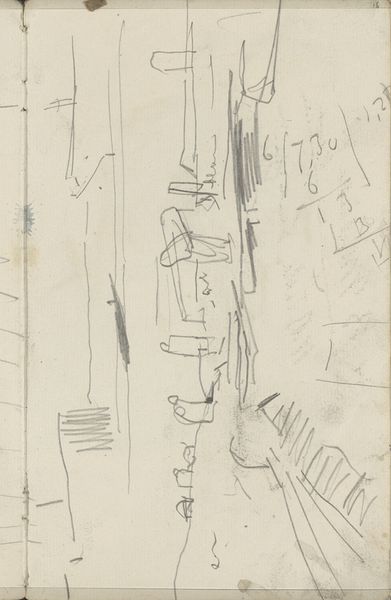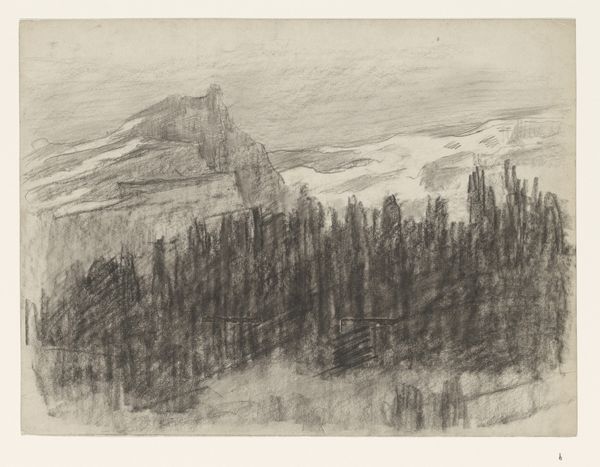
drawing, pencil
#
drawing
#
pen sketch
#
pencil sketch
#
landscape
#
pencil
#
realism
Dimensions: height 197 mm, width 126 mm
Copyright: Rijks Museum: Open Domain
Editor: Here we have Theo Nieuwenhuis’ "Houses Against a Mountain near Dresden (Wachwitz?)" from 1888. It's a pencil drawing, and I find the swirling lines creating the hillside and structures quite intriguing, almost vibrating with a quiet energy. What catches your eye in this drawing? Curator: Immediately, the stark materiality of the pencil on paper asserts itself. Consider the labor Nieuwenhuis invested – each line, each smudge contributing to the overall form. Notice, too, the presumed availability and affordability of these materials during this period, informing not just the "what" of the piece, but also the "how". Could this piece signal a democratizing shift in art production, challenging the traditional association of 'art' with expensive media? Editor: That's a fascinating point, framing it in terms of accessible materials! I hadn't considered how the choice of pencil itself challenges notions of high art. Do you see the landscape genre as also playing a part in that shift? Curator: Precisely. Landscape painting, often idealized and romanticized, when rendered in such a raw, immediate material like pencil, pulls the viewer back to the physical process of seeing and recording. The "realism" tagged to this artwork demands we ask - is it the realism of the scene, or the realism of labor and available means shaping our perception? This pencil sketch removes pretense and emphasizes production. Editor: I’m beginning to see this less as a simple landscape and more as a statement about art-making itself, or at least an investigation of the process. Curator: Exactly! Consider also the social context. Was Nieuwenhuis’ intention purely aesthetic, or could it be subtly critiquing societal values that elevated oil painting while dismissing 'lesser' forms of creative expression? These pencil lines start to suggest class and economic divides operating even within the art world itself. Editor: This has completely transformed how I view this piece. I appreciate seeing it not just as a drawing, but as a commentary on materiality, labor, and even class distinctions in art. Curator: Indeed. By analyzing the materials and the implied labour behind "Huizen tegen een berg bij Dresden", we start to unravel layers of meaning, revealing a much richer and complex piece of art than a mere representation of landscape.
Comments
No comments
Be the first to comment and join the conversation on the ultimate creative platform.
